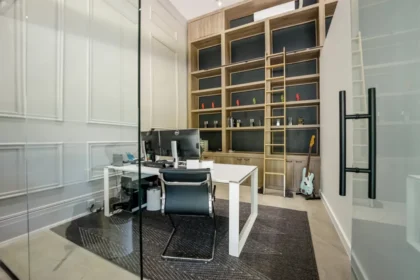
Navigating the world of commercial real estate leases can be overwhelming for both new and seasoned business owners. Commercial real estate leases form the foundation of many business operations, determining how much you pay for your workspace, the conditions of your tenancy, and your legal responsibilities. Whether you are a small business owner opening your first storefront or an established enterprise seeking to expand, understanding the nuances of commercial leases is critical to making informed decisions.
Leasing commercial property isn’t just about finding the right location—it involves analyzing the terms and costs to ensure they align with your business goals. With various lease types available, each offering distinct advantages and obligations, choosing the right one can have a profound impact on your company’s financial health. Understanding how lease terms such as triple net leases or gross leases work can save you significant costs in the long run and prevent unforeseen complications.
In this ultimate guide, we’ll dive deep into the different types of commercial real estate leases, explain the factors that influence costs, and provide actionable tips to help you negotiate the best deal. By the end of this guide, you’ll have the insights and strategies you need to confidently lease a space that meets your business’s needs and supports your growth.
Types of Commercial Real Estate Leases
When it comes to commercial real estate leases, the variety can be surprising. Each type has unique structures, payment terms, and responsibilities. Below are the main types of leases:
1. Gross Lease
In a gross lease, the tenant pays a fixed monthly rent, and the landlord covers all property-related expenses such as property taxes, insurance, and maintenance.
- Benefits: Simplicity in budgeting since the rent includes all costs.
- Drawbacks: Typically higher monthly rents as landlords factor in their expenses.
2. Net Lease
Net leases come in three variations—single net, double net, and triple net.
- Single Net Lease (N): Tenant pays rent and property taxes.
- Double Net Lease (NN): Tenant covers rent, property taxes, and insurance.
- Triple Net Lease (NNN): Tenant assumes responsibility for rent, taxes, insurance, and maintenance.
- Advantages of NNN Leases: Lower base rent and tax benefits for the tenant.
- Challenges: Fluctuating costs for maintenance and unexpected repairs.
3. Modified Gross Lease
A middle ground between gross and net leases, where tenants share some operating costs (e.g., utilities or janitorial services) with the landlord.
- Best for: Businesses wanting cost-sharing flexibility without taking full responsibility for property expenses.
4. Percentage Lease
This lease type is common in retail settings, where tenants pay a base rent plus a percentage of their sales.
- Pros: Aligns landlord and tenant interests in driving sales.
- Cons: Higher financial burden during peak sales periods.
5. Full-Service Lease
Typically used in office buildings, this lease includes all property-related costs, with tenants receiving shared amenities and services.
Factors Influencing the Cost of Commercial Real Estate Leases
The cost of a commercial lease isn’t solely determined by the square footage of a property. Several key factors influence pricing, which savvy tenants must evaluate.
1. Location
Prime locations in high-demand areas command premium rates. Consider whether paying extra for a bustling location offers enough foot traffic and visibility to justify the cost.
2. Lease Term
Longer leases often come with lower monthly rates or incentives, but they lock you into a commitment. Conversely, shorter leases provide flexibility but may have higher costs.
3. Property Condition
The condition of the property impacts its price. Newer buildings or those with modern amenities are pricier than older or less maintained spaces.
4. Build-Outs and Tenant Improvements
Many leases include provisions for tenant improvements. Understanding who covers the costs for modifications is critical.
5. Market Trends
Research market trends in your area to gauge whether lease rates are rising or falling. Timing your lease during a tenant-friendly market can save significant costs.
Tips for Negotiating Commercial Real Estate Leases
1. Understand Your Needs
Before entering negotiations, create a clear list of your business’s needs. Consider factors like size, location, parking, and proximity to clients or suppliers.
2. Do Your Homework
Research the local commercial real estate market. Understanding comparable rents in the area gives you leverage during negotiations.
3. Hire a Professional Broker
Engaging a commercial real estate broker ensures you have a professional who understands the market and lease terms. They can help identify red flags and secure favorable terms.
4. Negotiate the Lease Terms
Don’t accept the initial offer. Negotiate aspects such as:
- Base Rent: Request lower rates or an initial rent-free period.
- Maintenance Costs: Seek caps on annual increases for maintenance fees.
- Renewal Options: Negotiate favorable renewal clauses to lock in current rates.
5. Consult an Attorney
Have a real estate attorney review the lease before signing. They can identify legal ambiguities or clauses that could result in unexpected expenses.
6. Factor in Growth Potential
Ensure the lease accommodates your business’s potential expansion. Flexible terms allow you to upscale without penalty if needed.
Example Table: Comparing Lease Types
| Lease Type | Tenant Responsibilities | Ideal For | Key Benefits |
|---|---|---|---|
| Gross Lease | Pay fixed rent; landlord handles expenses. | Businesses wanting cost predictability. | Simplified budgeting. |
| Triple Net (NNN) Lease | Pay rent, taxes, insurance, maintenance. | Tenants seeking tax deductions. | Lower base rent. |
| Modified Gross Lease | Shared operating costs with landlord. | Flexible-cost sharing arrangements. | Balanced risk between tenant and landlord. |
| Percentage Lease | Pay rent + % of sales. | Retailers with strong revenue projections. | Scales with business performance. |
Conclusion: Securing the Best Lease for Your Business
Finding the right commercial real estate lease is more than a transactional process—it’s a strategic decision that can shape your business’s future. By understanding the types of commercial leases available, evaluating their costs, and employing savvy negotiation tactics, you can secure a lease that supports your business goals and financial health.
As we’ve explored, each lease type offers distinct advantages and challenges. Gross leases simplify budgeting, while triple net leases provide tax advantages. Location, market trends, and property condition are just a few factors that influence lease costs. Armed with this knowledge, you can confidently approach the leasing process and avoid costly mistakes.
Partnering with experienced professionals, conducting thorough research, and prioritizing flexibility ensures you’ll secure a lease tailored to your unique needs. The right lease not only provides a physical space for your business but also positions you for growth and success. By following the insights in this guide, you’re well-equipped to make a sound investment in your business’s future.






